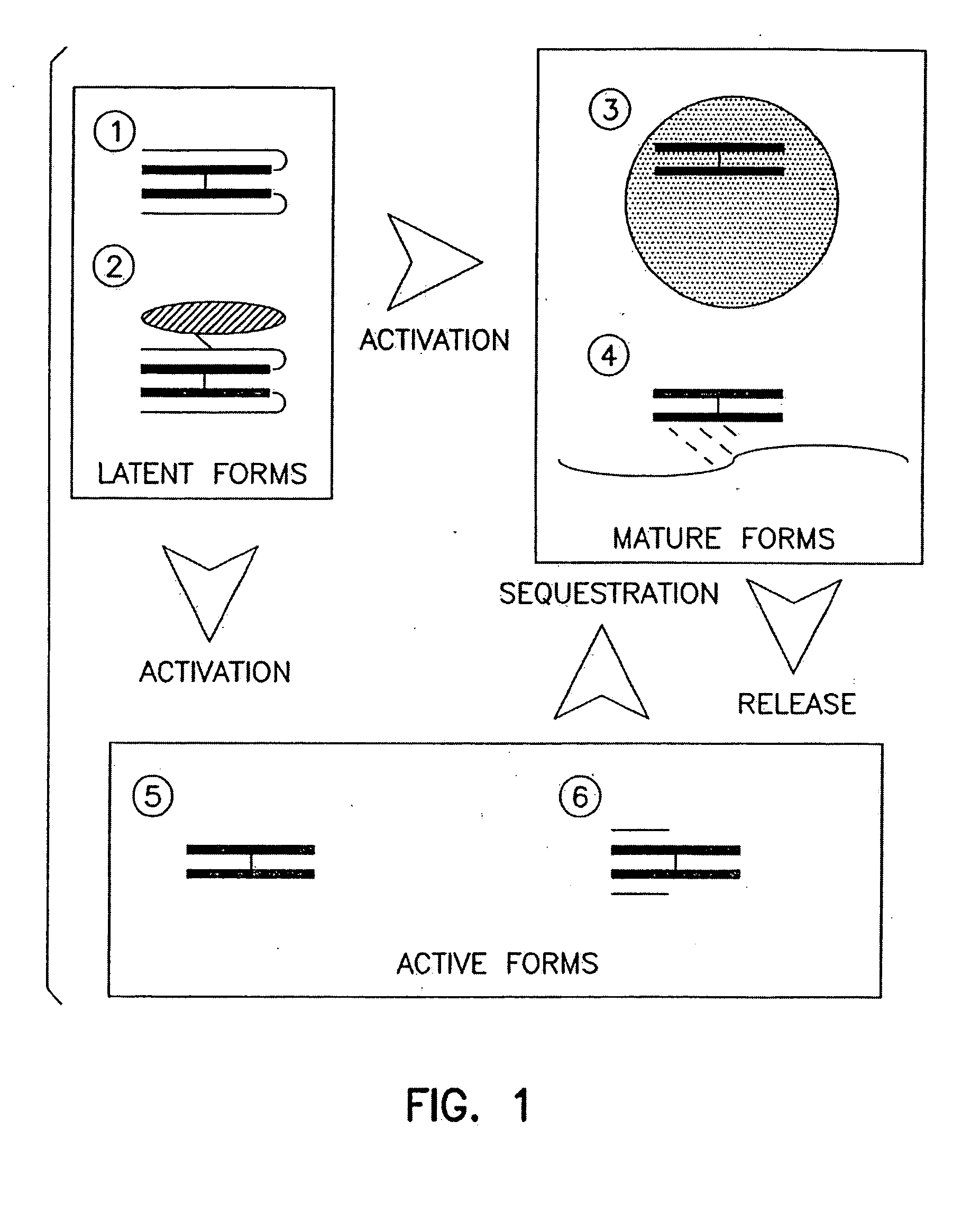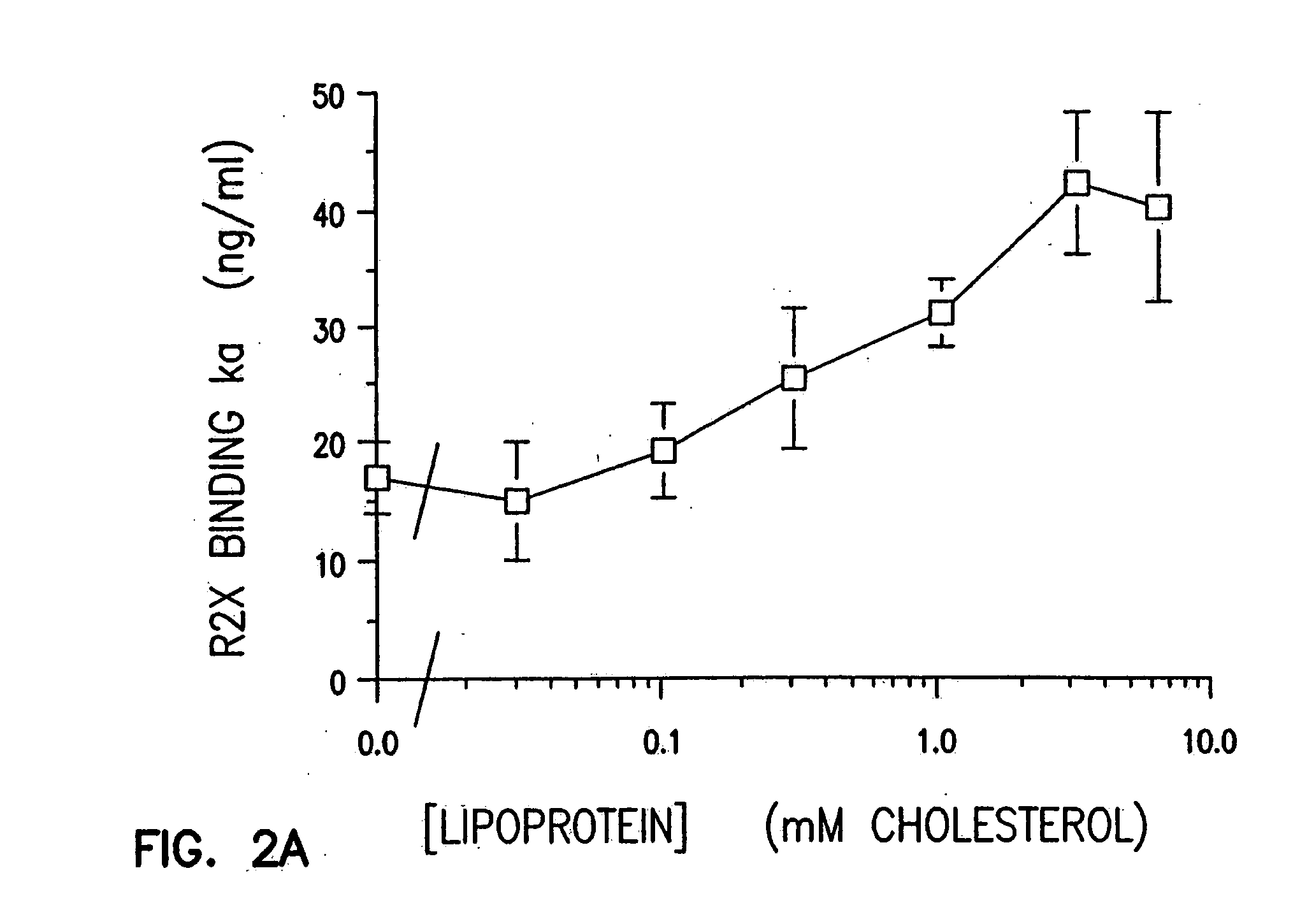Compounds and therapies for the prevention of vascular and non-vascular pathologies
a technology for vascular and non-vascular diseases, applied in the direction of heterocyclic compound active ingredients, biocide, instruments, etc., can solve the problems of liver cancer, increased risk of endometrial cancer, and positive cardioprotective effects of these agents, so as to increase the level of tgf-beta, increase the level of latent tgf-beta, and reduce the formation of lesion
- Summary
- Abstract
- Description
- Claims
- Application Information
AI Technical Summary
Benefits of technology
Problems solved by technology
Method used
Image
Examples
example i
Association of TGF-beta with Lipoprotein Particles
TGF-beta is a hydrophobic protein known to have affinity for polymeric aliphatic hydrocarbons. To determine whether TGF-beta would associate with lipoprotein particles in the circulation, platelet-poor plasma was prepared from peripheral venous blood drawn from ten healthy donors (A-J) and two donors with diabetes (K and L). The absence of platelet degranulation (<0.02% degranulation) was confirmed by measurement of PF-4 (platelet factor-4) in the plasma by ELISA (Asserchrom PF-4; Diagnostic Stago, FR). A 1 ml aliquot of plasma was diluted to 4 ml with Buffer A (Havel et al., J. Clin. Investig., 34, 1345 (1955)) and then KBr was added to final density of 1.215 g / ml. The lipoproteins were separated from the plasma proteins by density gradient ultracentrifugation (235,000×g) at 4° C. for 48 hours. The top 2 ml was collected as the lipoprotein fraction and the lower 2 ml was collected as the lipoprotein deficient plasma fraction...
example ii
Effect of Dietary Fish Oil on the Association of TGF-beta with Lipoprotein
To determine whether dietary supplementation with fish oil would reduce the association of plasma TGF-beta with the lipoprotein fraction, platelet-poor plasma was prepared from 33 donors prior to, and immediately following, four weeks of dietary supplementation with 2.4 g / day fish oil (Wallace et al., Arterial Thromb. Vasc. Biol., 15, 185 (1995)). A further plasma sample was prepared nine weeks after ceasing the supplementation. The fraction of TGF-beta associated with the lipoprotein pool was determined for each plasma sample.
At the end of the four week supplementation period total plasma triglyceride concentrations were somewhat reduced although total plasma cholesterol was unaffected (FIG. 4; Table 2). Fish oil supplementation also markedly reduced TGF-beta association with the lipoprotein fraction. The mean proportion of TGF-beta associated with lipoprotein was reduced from 19±10% (range <1% to 62...
example iii
Aspirin Increases Circulating TGF-beta Levels
Aspirin has been suggested to have cardioprotective effects and is now in widespread use by patients diagnosed with coronary atherosclerosis. It has been demonstrated to significantly reduce the incidence of a second myocardial infarction (MI) in individuals who have previously suffered an MI. However, any benefit for the primary prevention of MI has not yet been demonstrated rigorously, although some studies have reported encouraging results.
A number of effects have been suggested to play a role in the cardioprotective benefits associated with chronic use of low-dose aspirin. Aspirin interferes with normal platelet function and increases the blood clotting time, while decreasing the stability of fibrin deposits. Since chronic formation of mural thrombi is thought to be important in the development of atherosclerosis and acute thrombus formation is the main cause of MI, the anti-platelet function of aspirin is thought to be important ...
PUM
| Property | Measurement | Unit |
|---|---|---|
| plasma | aaaaa | aaaaa |
| diameter | aaaaa | aaaaa |
| stability | aaaaa | aaaaa |
Abstract
Description
Claims
Application Information
 Login to View More
Login to View More - R&D
- Intellectual Property
- Life Sciences
- Materials
- Tech Scout
- Unparalleled Data Quality
- Higher Quality Content
- 60% Fewer Hallucinations
Browse by: Latest US Patents, China's latest patents, Technical Efficacy Thesaurus, Application Domain, Technology Topic, Popular Technical Reports.
© 2025 PatSnap. All rights reserved.Legal|Privacy policy|Modern Slavery Act Transparency Statement|Sitemap|About US| Contact US: help@patsnap.com



